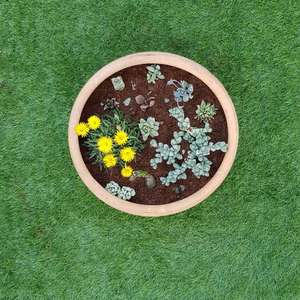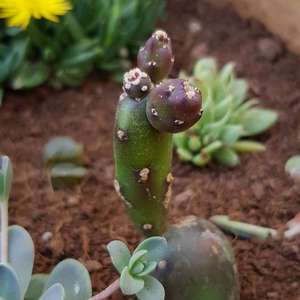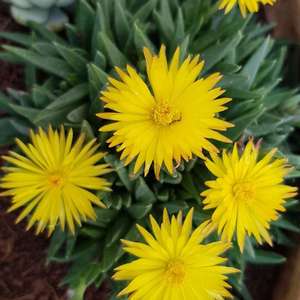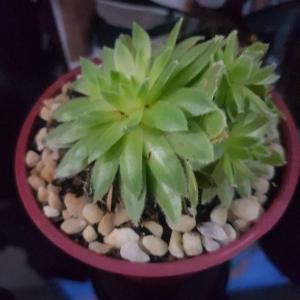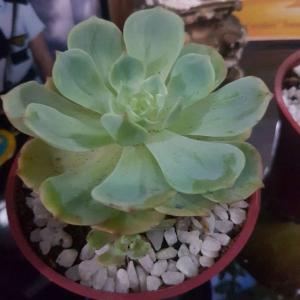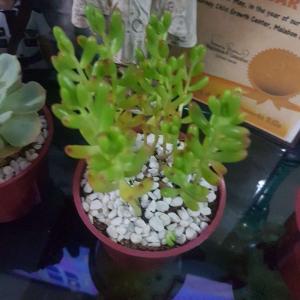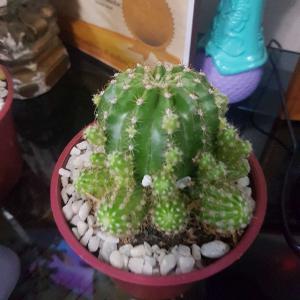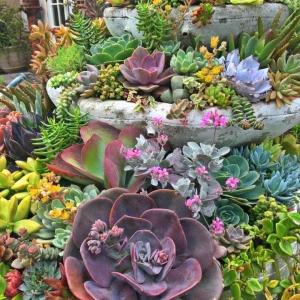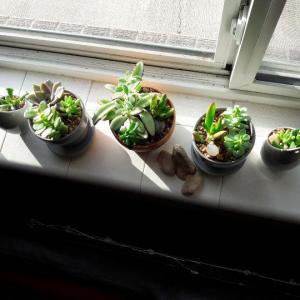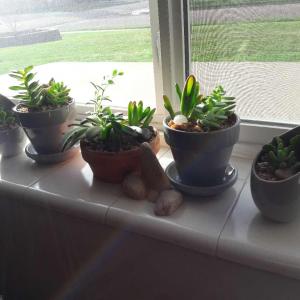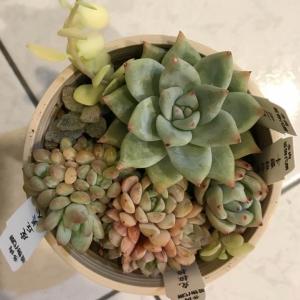求助
CaptainLou
2018年06月23日

i was given these succulents, if anyone could help me identify them so that i can look up the care i would be very grateful!
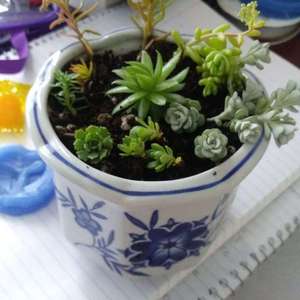

0
0
文章
Miss Chen
2018年06月23日

Succulents are booming in popularity for two simple reasons: they are beautiful and nearly indestructible.
Technically, a succulent is any plant with thick, fleshy (succulent) water storage organs. Succulents store water in their leaves, their stems or their roots. These plants have adapted to survive arid conditions throughout the world, from Africa to the deserts of North America. Fortunately for us, this adaptive mechanism has resulted in an incredible variety of interesting leaf forms and plant shapes, including paddle leaves, tight rosettes, and bushy or trailing columns of teardrop leaves.

As a group, succulents include some of the most well-known plants, such as the aloe and agave, and many almost unknown plants. Cacti are a unique subset of the succulent group. Succulents make excellent display plants in dish gardens.
The Rules for Growing Succulent Houseplants
No matter what kind of succulent you're growing, the rules are pretty similar between the different species. Here are the general rules for growing top-quality succulents:
Southern Light
Succulents prefer bright light, such as found on a south-facing window. Watch the leaves for indications that the light level is correct. Some species will scorch if suddenly exposed to direct sunlight. The leaves will turn brown or white as the plant bleaches out and the soft tissues are destroyed. Alternatively, an underlit succulent will begin to stretch, with an elongated stem and widely spaced leaves. This condition is known as etoliation.
The solution is to provide better light and prune the plant back to its original shape. Many kinds of succulents will thrive outdoors in the summer.
Temperature
Succulents are much more cold-tolerant than many people assume. As in the desert, where there is often a marked contrast between night and day, succulents thrive in colder nights, down to even 40ºF.
Ideally, succulents prefer daytime temperatures between 70 F and about 85 F and nighttime temperatures between 50 F and 55 F.
Watering
Succulents should be watered generously in the summer. The potting mix should be allowed to dry between waterings, but do not underwater. During the winter, when the plants go dormant, cut watering back to once every other month. Overwatering and ensuing plant rot is the single most common cause of plant failure. Be aware, though, that an overwatered succulent might at first plump up and look very healthy. However, the cause of death may have already set in underground, with rot spreading upward from the root system. A succulent should never be allowed to sit in water. The following are signs of under- or overwatering:
Overwatering. Overwatered plants are soft and discolored. The leaves may be yellow or white and lose their color. A plant in this condition may be beyond repair, but you can still remove it from its pot and inspect the roots. If they are brown and rotted, cut away dead roots and repot into drier potting media, or take a cutting and propagate the parent plant.
Under-watering: Succulents prefer generous water during the growing season (spring and summer). An under-watered plant will first stop growing, then begin to shed leaves. Alternatively, the plant may develop brown spots on the leaves.
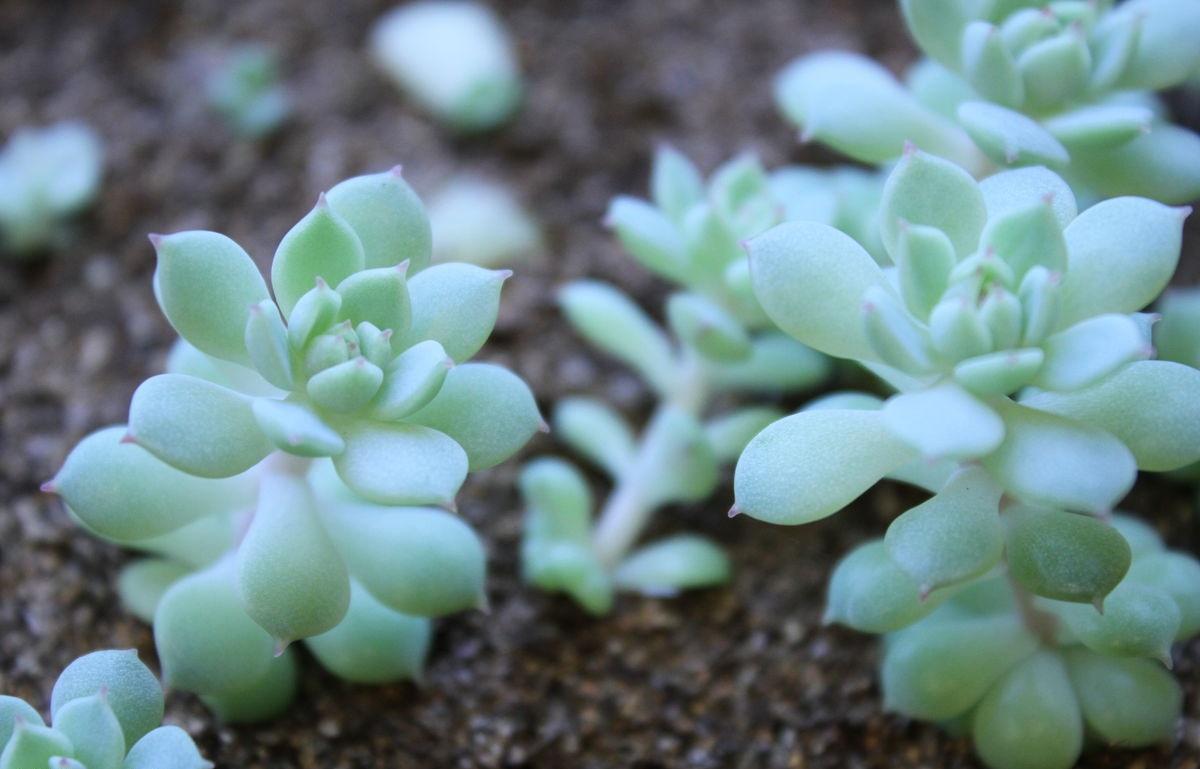
Potting Soil
Succulents should be potted in a fast-draining mixture that's designed for cacti and succulents. If you don't have access to a specialized mix, consider modifying a normal potting mix with an inorganic agent like perlite to increase aeration and drainage. These plants have shallow roots that form a dense mat just under the soil surface.
Fertilizer
During the summer growing season, fertilizer as you would with other houseplants. Stop fertilizing entirely during the winter.
Technically, a succulent is any plant with thick, fleshy (succulent) water storage organs. Succulents store water in their leaves, their stems or their roots. These plants have adapted to survive arid conditions throughout the world, from Africa to the deserts of North America. Fortunately for us, this adaptive mechanism has resulted in an incredible variety of interesting leaf forms and plant shapes, including paddle leaves, tight rosettes, and bushy or trailing columns of teardrop leaves.

As a group, succulents include some of the most well-known plants, such as the aloe and agave, and many almost unknown plants. Cacti are a unique subset of the succulent group. Succulents make excellent display plants in dish gardens.
The Rules for Growing Succulent Houseplants
No matter what kind of succulent you're growing, the rules are pretty similar between the different species. Here are the general rules for growing top-quality succulents:
Southern Light
Succulents prefer bright light, such as found on a south-facing window. Watch the leaves for indications that the light level is correct. Some species will scorch if suddenly exposed to direct sunlight. The leaves will turn brown or white as the plant bleaches out and the soft tissues are destroyed. Alternatively, an underlit succulent will begin to stretch, with an elongated stem and widely spaced leaves. This condition is known as etoliation.
The solution is to provide better light and prune the plant back to its original shape. Many kinds of succulents will thrive outdoors in the summer.
Temperature
Succulents are much more cold-tolerant than many people assume. As in the desert, where there is often a marked contrast between night and day, succulents thrive in colder nights, down to even 40ºF.
Ideally, succulents prefer daytime temperatures between 70 F and about 85 F and nighttime temperatures between 50 F and 55 F.
Watering
Succulents should be watered generously in the summer. The potting mix should be allowed to dry between waterings, but do not underwater. During the winter, when the plants go dormant, cut watering back to once every other month. Overwatering and ensuing plant rot is the single most common cause of plant failure. Be aware, though, that an overwatered succulent might at first plump up and look very healthy. However, the cause of death may have already set in underground, with rot spreading upward from the root system. A succulent should never be allowed to sit in water. The following are signs of under- or overwatering:
Overwatering. Overwatered plants are soft and discolored. The leaves may be yellow or white and lose their color. A plant in this condition may be beyond repair, but you can still remove it from its pot and inspect the roots. If they are brown and rotted, cut away dead roots and repot into drier potting media, or take a cutting and propagate the parent plant.
Under-watering: Succulents prefer generous water during the growing season (spring and summer). An under-watered plant will first stop growing, then begin to shed leaves. Alternatively, the plant may develop brown spots on the leaves.

Potting Soil
Succulents should be potted in a fast-draining mixture that's designed for cacti and succulents. If you don't have access to a specialized mix, consider modifying a normal potting mix with an inorganic agent like perlite to increase aeration and drainage. These plants have shallow roots that form a dense mat just under the soil surface.
Fertilizer
During the summer growing season, fertilizer as you would with other houseplants. Stop fertilizing entirely during the winter.
0
1
文章
Miss Chen
2018年06月23日

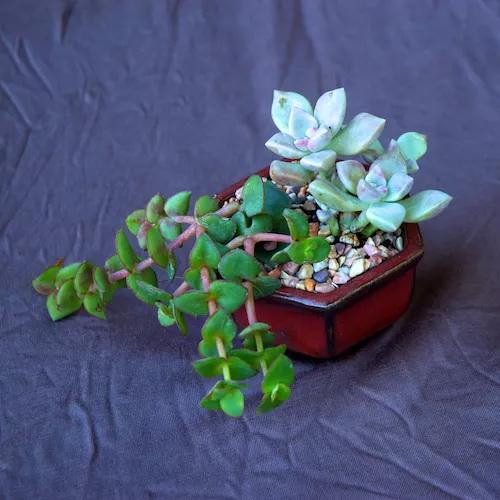
7.Two Small Succulents in a Tiny Pot
Even two small succulents in a tiny pot can make a big statement. These succulents, are only about two inches tall and the pot is about one and a half inches tall and two inches wide.
What makes this tiny succulent pot really work is the topdressing of gravel - it gives it a finished look and marries the plants to the pot.
The plants used in this pot are: Ghost plant, also known as mother of pearl plant or Graptoptalum paraguayense, 'Ghosty'
The trailing plant is Calico Kitten, Crassula marginalis, rubra, 'Veriegata'
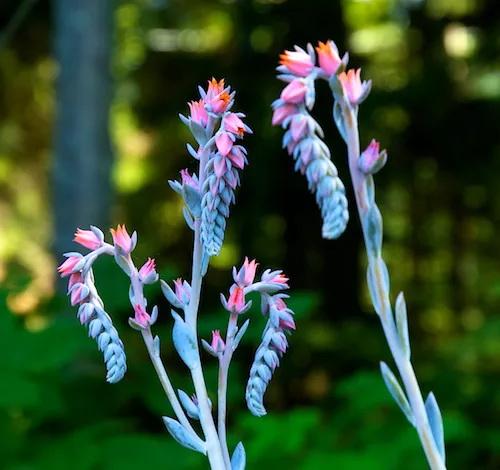
8.Echeveria Flowers
While echeverias are rarely grown for their flowers, they can put on a spectacular display during the summer months. Echeverias are easy to grow succulents and they are spectacular. There are about 150 species of echeveria, with a wide range of colors and textures.
Like all succulents, echeverias need fast draining potting soil and will rot if kept too wet. However, they don't like to be too dry either. They prefer bright light, though full sun can scorch them.

9.Succulent Plants in a Strawberry Pot
I love how succulent plants look in a strawberry pot. This is a medium sized strawberry pot, and it holds lots of plants.
When I brought this pot home from the store and unwrapped it, I realized there were no drainage holes. I am not a good enough gardener to risk trying to any plant, much less a succulents which really don't like to be too wet, without the benefit of drainage holes. So I got out my trusty drill, fitted it with a bit for drilling ceramics and put in several large holes.
Planting Strawberry Pot with Succulent Plants
Cover Drainage Holes - Use a piece of plastic window screening, paper towel or a coffee filter to cover drainage holes - anything that will keep soil in and let water out.
Fill Strawberry Jar with Potting Soil - Make sure to use either a potting mix that is designed specifically for succulents or add perlite or pumice to any good potting soil. Fill your jar, making sure that all the pockets are filled as well and then firm the soil gently.
Plant Succulents - Carefully take your plants out of their pots. If there is extra soil, you can gently take some off. Put your largest succulent plants in the top of the strawberry jar, making sure to plant them at the same level they were in their nursery pot. Fill the pockets with smaller succulents. Some succulents, like hens and chicks will root if placed on top of the soil
Water Gently - Add water to your strawberry pot so that the soil becomes moist, not wet. You will want to make sure that the pockets get some water too. During the summer, keep the soil moist but not wet. If you live in a cold climate, bring your succulents inside to overwinter them and water only after the soil has dried out. Keep in bright indirect light.
Most plants in this container were provided by Costa Farms.
0
0
文章
Miss Chen
2018年06月23日

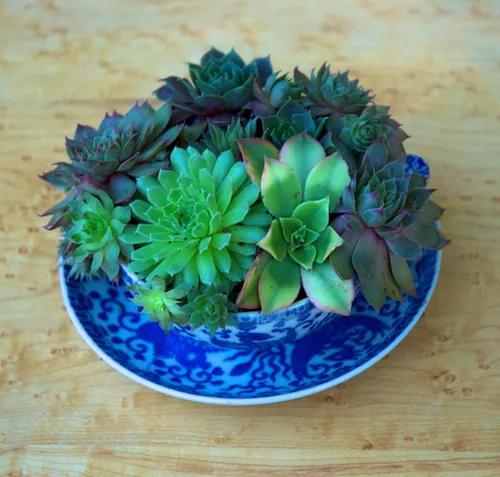
4.Succulent Plants in Tea Cup
Succulents can look great in almost anything - from a very formal container to one that is quite casual. I put these succulent plants in a tea cup that I got at a yard sale. I bought the whole set for a couple of dollars and then drilled holes in the bottoms of the cups.
For succulent plants, good drainage is essential. If you let them sit in water, succulents will quickly rot, so using a fast draining potting mix, and putting holes in your containers is the easiest way to keep your plants healthy.
To drill holes in ceramics, you need a special drill bit and some patience. It takes awhile to get through ceramics, and you have to let the bit cool down so that the heat doesn't build up from the friction and shatter your cup.
Make sure to put your cup on a firm surface. You can place a rag or flat, thin sponge on a counter, or I like to drill outside, on the ground so I don't have to clean up the dust. It's a good idea to wear safety goggles when doing any drilling, but particularly with ceramics which can shatter.
After the holes are drilled, I cut a small piece of plastic window screening and put it over the holes, to keep the soil in and let the water out. You can also use paper towel or a coffee filter.
I then fill the cup, almost to the top, with a cacti and succulent potting mix, plant my succulents and gently water, giving enough moisture so that the soil is damp. I then let the soil in the cup settle and the succulent plants take root.
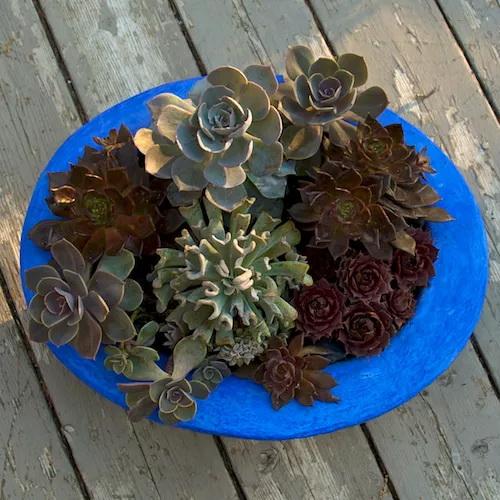
5.Artist's Succulent Pot
What makes this succulent pot work so well is the spectacular concrete vessel, made by California artist, Mary Martha Collins. Mary crafts each pot by hand and then applies one of many stunning colors as a patina. This dish style of pot works particularly well with succulents because it is relatively shallow and succulents have a shallow root system.
When planting succulents, I use a potting mix designed specifically for cactus and succulents, which I buy at a nursery.
I like the strong color of the pot which sets off the interesting colors of the succulent plants.
Because of careless over-watering, when I first planted this pot, some of the original plants died. I simply pulled them out and replaced them with new plants.
Step-by-step instructions for how to make this succulent garden.
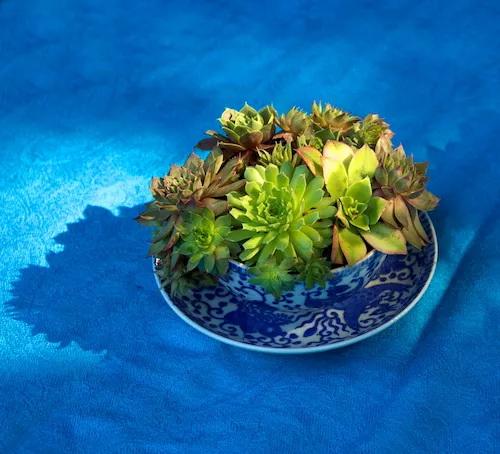
6.Vintage Tea Cup with Mixed Succulent Plants
I love stuffing succulents in small containers. This vintage tea cup and saucer was found at a second hand store and cost a dollar. I used a ceramic bit on a drill to put several holes in the bottom of the cup, to insure the good drainage that succulents need. I then filled the cup with succulent and cactus potting mix and then packed it with a mix of succulents. I water it infrequently - letting the soil dry out between waterings - especially in the winter.
0
0
Simplysucculent
2018年06月18日

It’s been so hot and sunny that my succulents dry out in a single day! Some of them are starting to get sunburnt, so I’ve been watering them every other day.
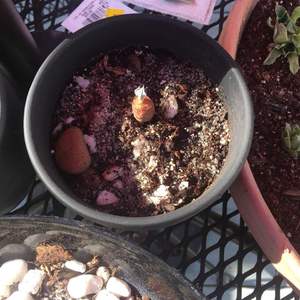

0
0
Dharini giri
2018年06月15日

My succulents are drying up and dying.. Is it due to lack of sunlight or lack of water ??




0
0
Dharini giri:They died.. nothing worked
Dharini giri:They get 3 hrs of sunlight in the evening. I’m going to keep them hydrated
shirly mei:Maybe lack of water? the succulents still haven't formed roots yet so it is more sensitive to intense light.
求助
Julius Laliag
2018年05月27日

i dont know the names of all of these succulents
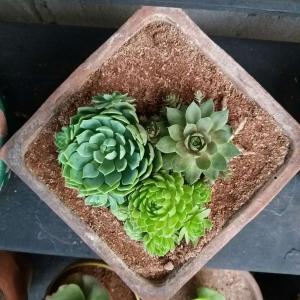
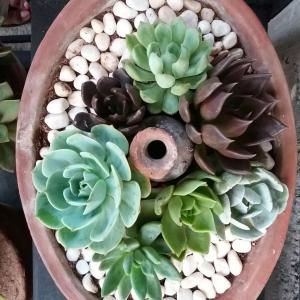



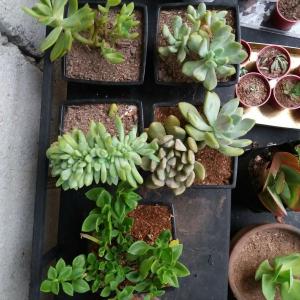


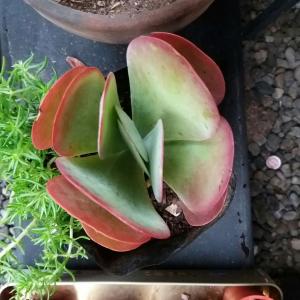









2
0
meriunkat:You should take individual pictures for the rest because it's either hard to see well or you have too many plants we would confuse you as to which is which..
meriunkat:Or Sedum Adolphii Firestorm
meriunkat:Third picture on row 1 is Sedum Adolphii Golden Glow
meriunkat:The second picture on row 1 the blue plant on the left is Echeveria Glauca
meriunkat:The first picture the plant on the right with the babies is a type of sedum
显示更多
Finncarter
2018年05月13日

Lithops Olivecea, know as the living stone has annual (white daisy) likd flowers - for up to 3 weeks. These slow growing succulents produce lovley patterns on the top. they need to be watered every 4-6 weeks. @GFinger #Lithops ##Pattern ##Livingstones #Daisy
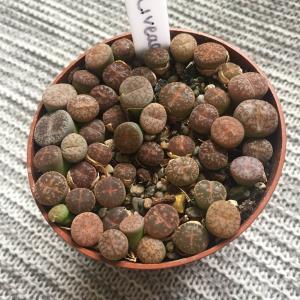

1
0
sofiag
2018年05月09日

My boyfriend gifted me 2 succulents for my birthday(5/7/18), among other things. He named the Moon Cactus ‘Cherry Cactus’ ❤️
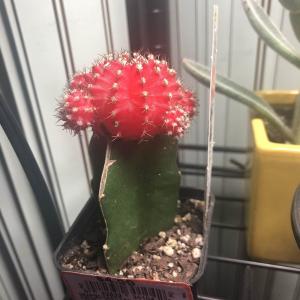
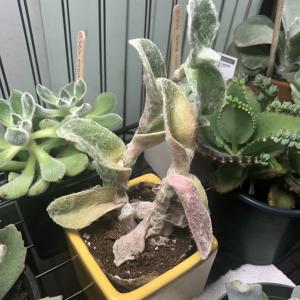


0
0
求助
kaylawolfe97
2018年04月06日

I'm not sure what kind of plants these are I'm extremely new to gardening to help with my anxiety and depression and I really don't want to mess up, knowing what kind of succulents/cacti I am caring for seems to be good start, also I don't have and pots for them so I kind of just put them in some tin cans 😂




1
0
meriunkat:I feel like I bought mine for the same reason unconsciously, do those cans have holes underneath? The objects you use as pots need drainage. The first succulent is called either Pachycerous Schottii or Cerus Hidmannianus Subsp. Uruguayanus, a common nickn3is "Fairy Castle". The second succulent is called Kalanchoe Tomentosa, a common nickname is "Panda Plant".



